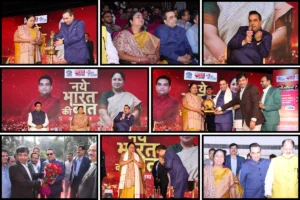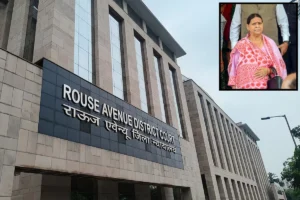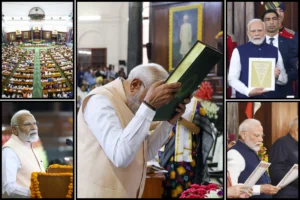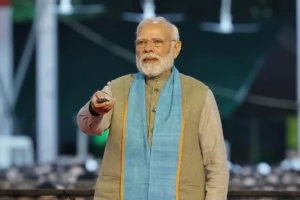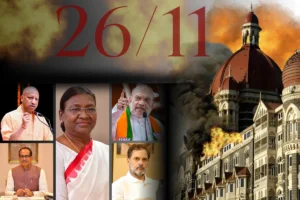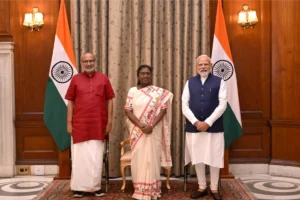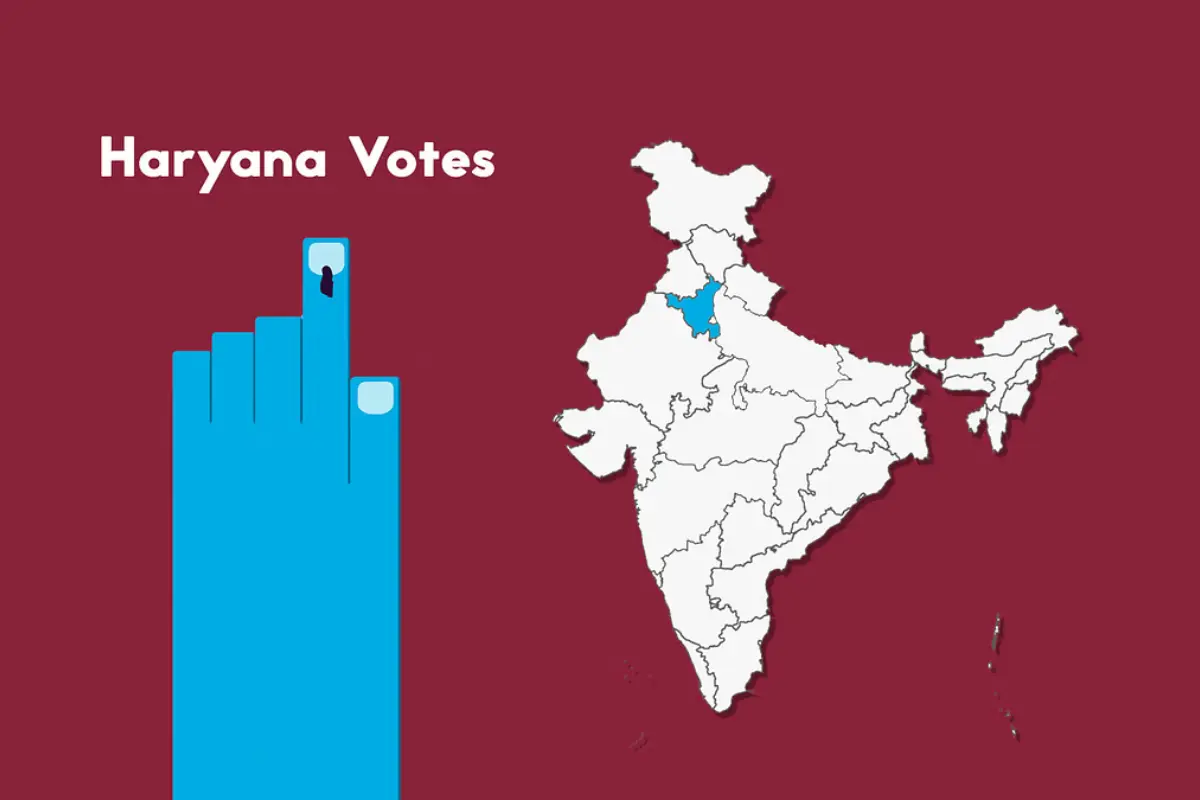
Social Composition Of Voters
Caste remains a significant factor influencing electoral outcomes in Haryana. OBCs make up approximately 30% of the population, Jats around 23%, and Dalits about 22%. Brahmins constitute roughly 7.5%, while Rajputs account for about 3.4%. Historically, Jats have been the dominant political caste, shaping the state’s political landscape. In contrast, despite comprising 22% of the population, Dalits have struggled to assert themselves politically, largely due to a lack of leadership and mobilization.
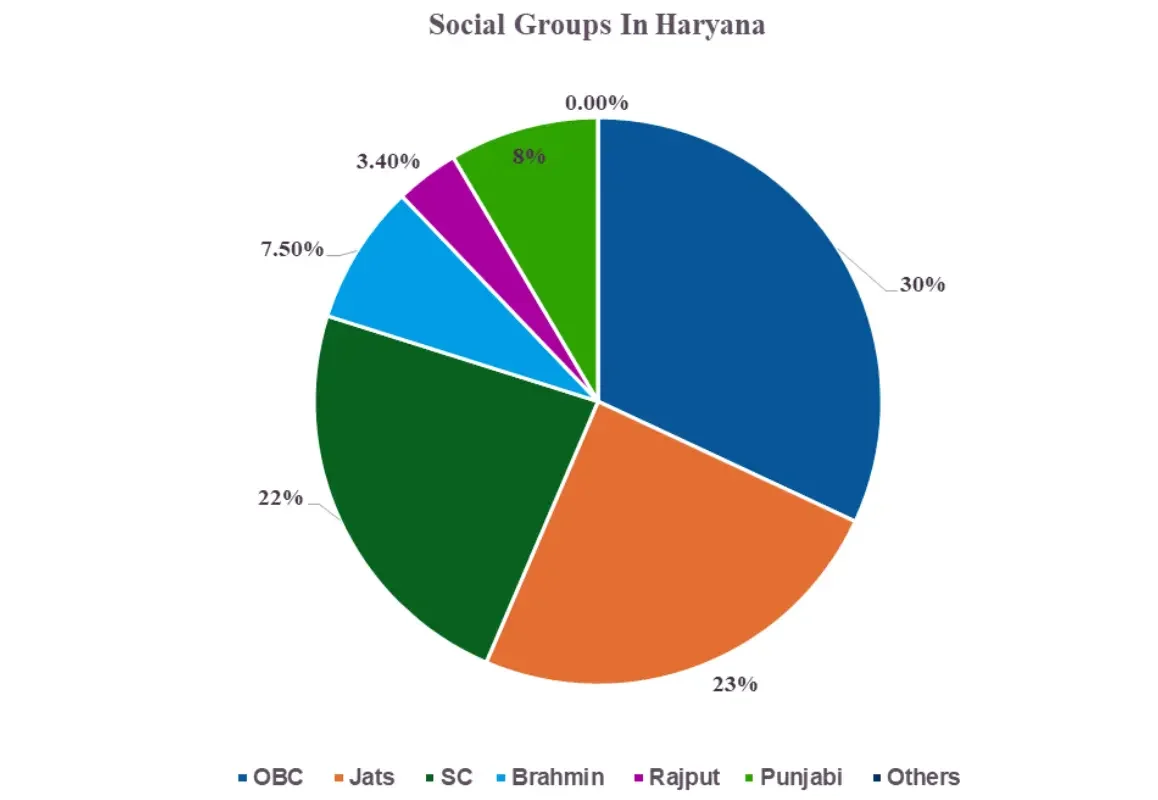
Dalit Voters In Haryana
There are 17 constituencies reserved for Scheduled Castes (SC) in Haryana, though some districts, like Mahendragarh and Gurgaon, do not have any reserved seats. Notably, one in every five people in Haryana is a Dalit, with the majority residing in rural areas. The highest concentration of Scheduled Caste population is in Fatehabad district (30.2%), followed by Sirsa (29.9%) and Ambala (26.3%). In contrast, Mewat (6.9%), Faridabad (12.4%), and Gurgaon (13.1%) have the lowest percentages of Scheduled Caste populations.
Voting Trends In Reserved Constituencies
Voting trends in reserved constituencies reveal some interesting shifts. In the 2019 Haryana Assembly elections, out of the 17 reserved assembly constituencies, the Congress secured seven seats, the BJP five, the Jannayak Janta Party (JJP) four, and an independent candidate won one seat. This marked a significant change from the 2014 assembly elections, where the BJP had a dominant presence, winning nine out of the 17 reserved seats. In contrast, Congress secured only four seats, the Indian National Lok Dal (INLD) won three, and the Shiromani Akali Dal (SAD) captured one.

The shift in voting patterns between the two election cycles suggests a reconfiguration of political allegiances among the Dalit electorate. The decline in the BJP’s hold over these constituencies and the shift of Dalit votes towards Congress may reflect growing discontent among Dalit voters with the ruling party or a desire for change. The BSP, which used to have a vote share of 4%, has also seen a decline. Additionally, the emergence of JJP as a significant player in these constituencies indicates a diversification of political representation within the Dalit community, possibly pointing to regional factors or local leadership influencing voter behavior.
Analyzing the 2024 Lok Sabha vote assembly-wise, the BJP experienced a decline in voter support in three of the five seats it won, indicating a negative swing. In one seat, the vote share remained unchanged, while only one seat showed an increase in votes. This mixed performance suggests some challenges for the BJP in maintaining its voter base. In contrast, Congress saw a negative swing in just one seat, while four seats showed no significant change, suggesting stability. Notably, Congress achieved a positive swing in two seats, indicating a potential growth in support. Overall, the comparison shows that while the BJP faced some erosion in its voter base, Congress managed to maintain its position, with signs of a slight upward trend.
Deciphering Shifts In Dalit Votes
These trends underscore the evolving political dynamics in Haryana’s reserved constituencies and highlight the critical role of Dalit votes in the state. As Dalits constitute a significant percentage of the population, their voting behavior signals broader shifts in the political landscape.
In 2014, the BJP successfully forged a broad social coalition that included OBCs, upper-caste voters, and Dalits, while also attracting Jat voters who traditionally supported the Congress. This coalition played a key role in the BJP’s sweeping victories in the 2014 Lok Sabha and Assembly elections, and subsequently in the 2019 elections. However, the BJP’s social coalition has begun to show signs of weakening, indicating potential challenges ahead. The consolidation of Jat and Dalit voters in favor of Congress led to a significant decline in the BJP’s vote share, dropping from 58.21% in the 2019 Lok Sabha elections to 46.11% this time. In contrast, Congress saw a sharp rise in its vote share, from 28.51% to 43.67%, indicating a substantial shift in voter allegiance. This shift was particularly evident in the seats where Congress increased its tally from zero to five, while BJP’s count fell from ten to five.
This electoral shift reveals two critical developments in Haryana’s political landscape. First, Congress has successfully consolidated its traditional voter base among Jats. According to the CSDS post-poll survey, two out of every three Jats supported Congress, marking a notable 31% increase from 2019. This resurgence is evident in Congress’s victories in Jat-dominated constituencies such as Hisar, Sirsa, Sonipat, and Rohtak.
Second, there has been a significant shift among Dalit voters, who previously split their votes between BJP and Bahujan Samaj Party (BSP). This time, a majority of Dalits aligned with Congress, contributing substantially to the party’s electoral success.
Additionally, BJP has faced damage to its OBC vote base, with one in every two OBC voters now supporting Congress, reflecting a 29% increase from 2019. Despite retaining its core upper-caste support, BJP has lost considerable ground among both OBC and Dalit voters, indicating a retreat from its earlier strongholds.
Factors Responsible For The Shift In Dalit Votes
Several factors influenced this shift. The narrative suggesting that BJP might amend the Constitution and abolish reservation policies if it secures 400 seats has resonated negatively with Dalit voters. Moreover, Congress leader Rahul Gandhi has effectively cultivated a pro-poor, pro-Dalit narrative through his speeches, further swaying Dalit support towards his party. The proximity of the Assembly elections to the Lok Sabha polls, coupled with a prevailing anti-BJP sentiment, has amplified these effects. The presence of Kumari Selja, a prominent SC leader and potential Chief Ministerial candidate, has also strengthened Congress’s appeal among Dalit voters.
Furthermore, BJP’s tenure has been criticized for its shortcomings in delivering on various schemes targeted at the Dalit community. High inflation, poor implementation of initiatives like the ‘Parivar Pehchan Patra,’ and frequent paper leaks have further marred its incumbency. In an attempt to regain lost ground, BJP has accelerated welfare schemes for the SC community, including the introduction of a ‘quota within quota’ for 36 sub-castes in higher education. However, these efforts may not have been sufficient to counter Congress’s growing influence and the broader anti-incumbency sentiment.
Conclusion
The upcoming electoral contest in Haryana is set to be pivotal, hinging on how effectively Congress and BJP can connect with Dalit voters—a critical demographic in the state. Congress boasts significant strengths, including strong Dalit leadership in figures like Shailja Kumari, who could mobilize substantial support, and Rahul Gandhi’s consistent pro-Dalit rhetoric, reinforcing the party’s image as a champion of marginalized communities. However, internal factionalism, inadequate grassroots outreach, and potential fragmentation of their vote base due to the Depressed Class Quota introduce significant vulnerabilities.
On the other hand, BJP’s strengths include its rapid implementation of pro-Dalit development programs, a robust grassroots network for effective outreach, and the strategic use of Depressed Class reservation policies to attract support from marginalized sub-groups. Despite these strengths, BJP faces substantial challenges. The absence of prominent Dalit leadership and potential alienation from sub-caste reservation policies are exacerbated by an ineffective messaging campaign.
Ultimately, the success of each party in addressing Dalit concerns, particularly around reservations and representation, will be crucial in determining the outcome of the upcoming elections.
To read more such news, download Bharat Express news apps







